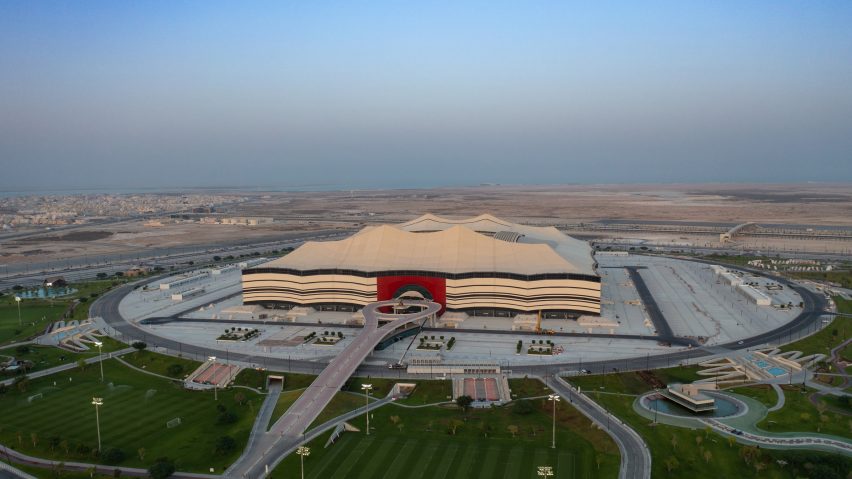
Stadium in giant tent completes ahead of World Cup in Qatar
Multidisciplinary studio Dar Al-Handasah has completed the 60,000-seat Al Bayt Stadium in the Qatari city of Al Khor for the FIFA 2022 World Cup.
Set to host the football tournament's opening game next November, the stadium is defined by its distinctive tent-like structure.
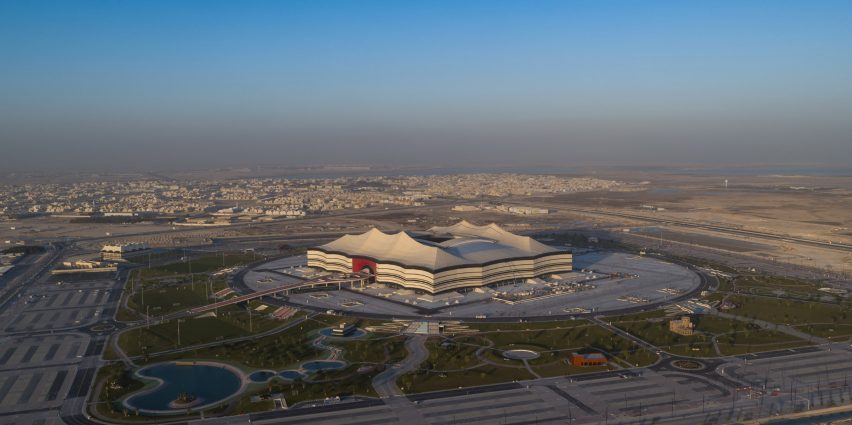
Built in the northern port city of Al Khor, the Al Bayt Stadium was named after the historic bayt al sha'ar tents that were traditionally used by nomadic people in the country and across the region.
Dar Al-Handasah's design was directly informed by these tented structures.
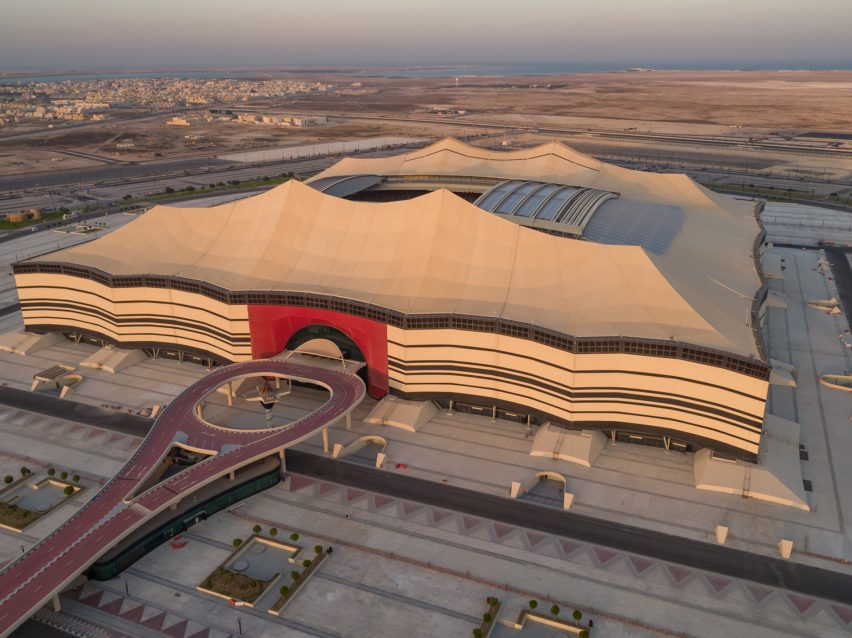
The exterior walls and peaked roofs of each of the four stands surrounding the pitch were covered in polytetrafluoroethylene (PTFE) woven fiberglass membrane to create the tent-like form.
A retractable roof connects the four stands to enclose the stadium.
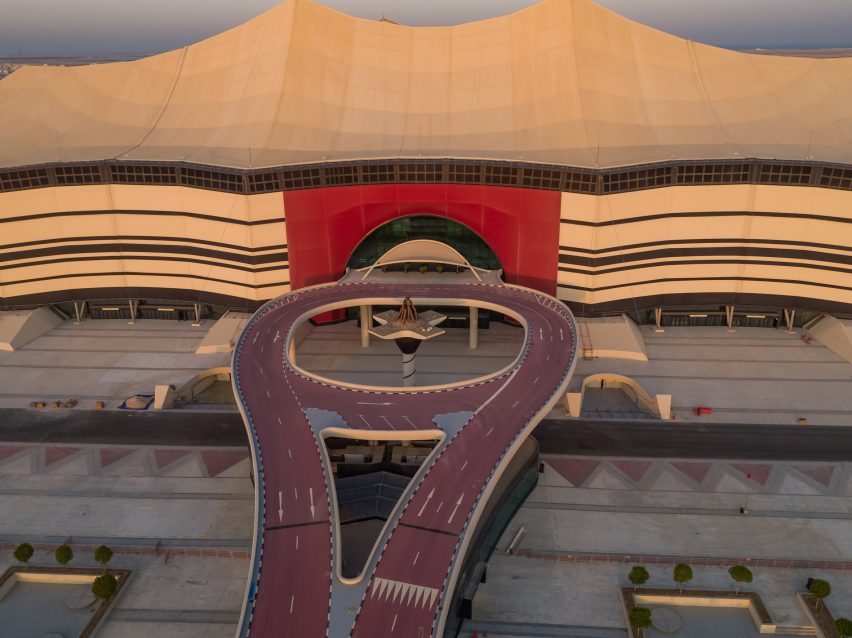
"As well as being incredibly eye-catching, the tent design is deeply practical," said Qatar's Supreme Committee for Delivery & Legacy.
"The shade provided by the tent structure and its retractable roof system complement the stadium's cooling technologies, helping maintain a comfortable temperature inside without using any extra power."
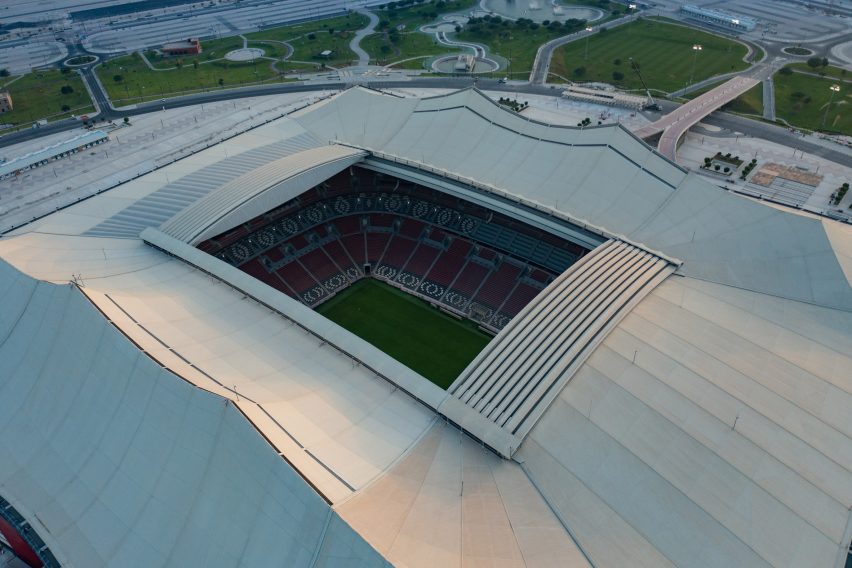
The stadium's PTFE membrane exterior was coloured in traditional black, red and white colours to further reference the traditional nomadic people's tents. Weaving patterns used by the nomadic tribes have also been incorporated with the building.
"Traditionally, the tents of nomadic tribes and families in Qatar could be identified by black stripes like those on the arena's distinctive exterior, and by the vibrant sadu patterns that will greet fans once inside the stadium," said the Supreme Committee for Delivery & Legacy.
Following the tournament, the stadium's upper tier of seating will be removed to reduce the venue's capacity to 32,000. According to the tournament's organisers, these stands will be donated to help build sporting infrastructure in other countries.
"After the tournament, the arena will reach even more people around the globe in a remarkable way," said the Supreme Committee for Delivery & Legacy. "Like a true nomad's tent, it is portable."
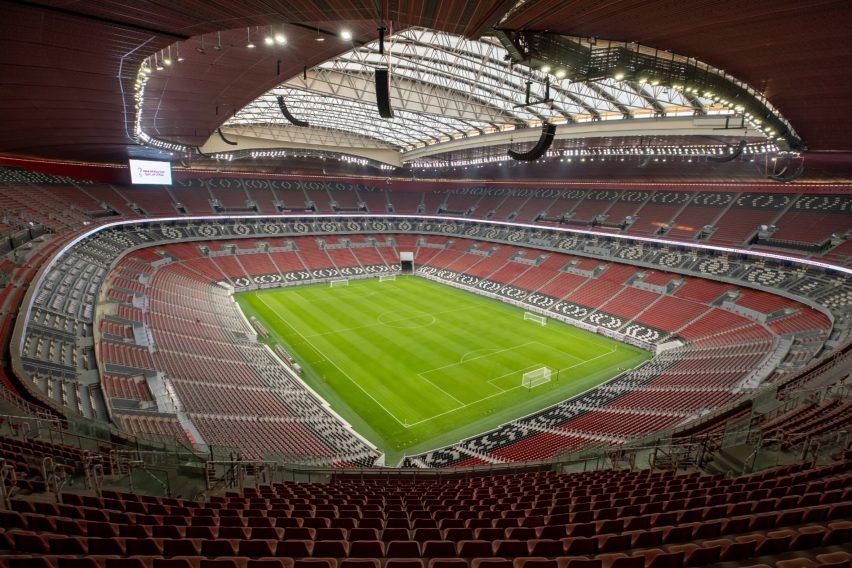
A luxury hotel will be built within the upper tier once the seating is removed.
Various other facilities including a shopping centre, restaurants, gym, sports medicine hospital, and community hall will also be built within the stadium after the tournament.
Al Bayt Stadium is the sixth venue to be inaugurated ahead of the World Cup next year. Last week saw the opening of Stadium 974, which incorporates 974 shipping containers in its design, while the Zaha Hadid-designed Al Wakrah Stadium hosted its first match in 2019.
Photography courtesy of Qatar's Supreme Committee for Delivery & Legacy.